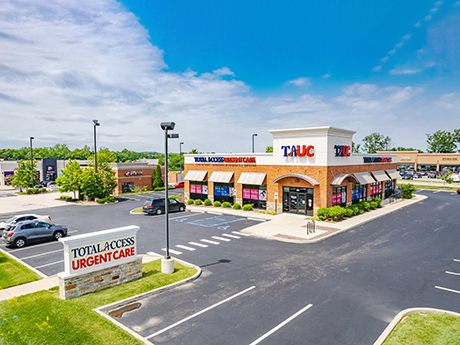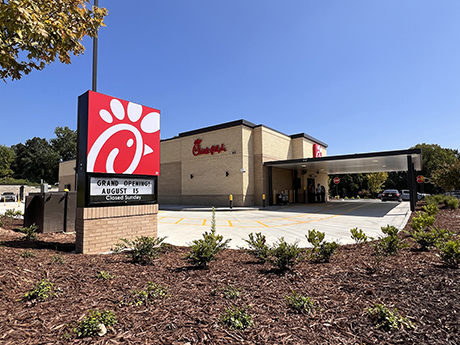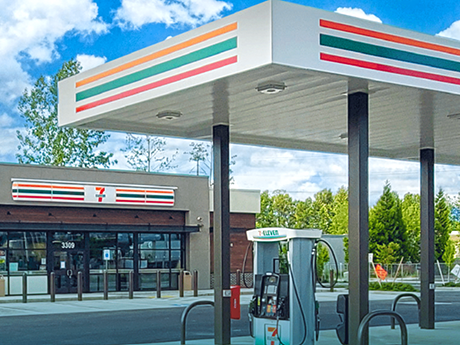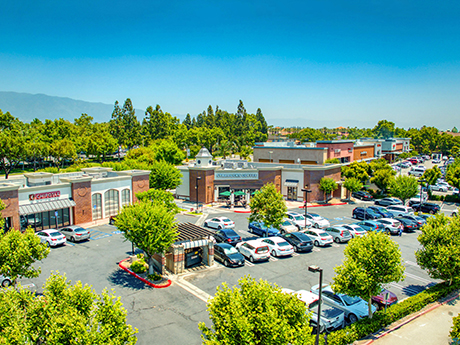Disconnects between buyers and sellers, higher interest rates and uncertainty in the market led to a stagnant market for single-tenant retail properties in 2024. Many see an upturn ahead for 2025.
Deals are getting done in the net lease sector, just not with the volume or velocity that industry veterans would like to see. Higher interest rates have hampered transactions in most commercial real estate sectors, leading to a slowdown in 1031 transactions, which the net lease sector is extremely dependent upon.
Those in the industry are positive about 2025, however. With the Federal Reserve Bank recently cutting interest rates — and promising further cuts ahead — the winds appear to be in favor for the sector. SCB recently spoke with a number of net lease industry executives for its annual roundup.
Putting Wind In The Sails
For the past two years, the net lease market has been somewhat stymied by higher interest rates. Because most assets in the sector sell for under $15 million, the sector is heavily dependent on 1031 buyers — those selling from a commercial real estate asset and moving to another — and financing to lever those acquisitions. Because transaction volume has slowed in sectors like multifamily and office, 1031 transactions have slowed their pace. Higher interest rates directly impact an investor’s yield, often making investments fall out of desired yield margins. With larger transactions, more financing is needed, making the ROI, or yield curve, longer.
“Smaller assets in net lease — those under $2 million in price — are moving really well,” says Bob Horvath, executive vice president at Boston-based Horvath & Tremblay. “Those assets under $5 million are also moving ok. Those at a price point between $5 million to $15 million are a little more challenging from a transaction standpoint.”
That type of environment has also created some competition for net lease assets from an investment standpoint.
“For a long time, net lease had strong returns and was not competing against government bonds,” says Daniel Taub, senior vice president and national director of the retail and net lease divisions at Marcus & Millichap. “Now that interest rates are higher, net lease is on-par with bonds, which are 100 percent risk-free and garner about the same return as some of the lower cap rate deals. Rising interest rates have also caused the cost of capital to increase from a debt perspective.”
Mid-2024, buyers and sellers paused, waiting for interest rate movements in hope that lower rates would bring more movement in deal fundamentals and reset the market by year end. That did not happen.
“I don’t think there’s going to be a dramatic change for the first two quarters of 2025,” says Sean O’Shea, managing principal of The O’Shea Net Lease Advisory Group in Santa Monica, California. “Now the suggestion is there may be government action that may lead to inflation. I think that, plus the possibility of lower interest rates in the future is going to lead to a further holding period over the next several quarters.”
“The current rate environment for net lease is challenging and is definitely impacting transaction volume,” says Jeffrey Thomas, founder of the Thomas Group, based in Sun Valley, Idaho. “Many buyers and sellers appear to be holding off, waiting for better conditions to transact. The majority of transaction we are seeing are driven by necessity, such as 1031. Beyond these cases, overall market velocity and deal volume were relatively subdued in 2024.”
Most of the slowdown in the market can be attributed to the higher interest rate environment. While the Federal Reserve Bank has lowered its primary lending rate, the 10-year Treasury rate has risen.
“A lof of our financing is based off SOFR, the prime lending rate and the 10-year Treasury rate,” says Matthew Mousavi, senior managing principal and co-managing director of the national net lease platform at SRS. “Earlier this year, the Treasury rate was 3.6 percent; now after the cuts it is higher at around 4.6 percent. That took some wind out of our sails; it has a direct correlation with our financing in the net lease sector. That puts upward pressure on cap rates.”
The interest rate cuts were expected to increase volume in the sector. However, that has not materialized.
“As a result of the interest rate cuts, we are seeing incremental increases in sale transaction velocity, but not the substantial surge that many in the industry had anticipated,” says Bill Asher, executive vice president of Hanley Investment Group Real Estate Advisors in Corona del Mar, California. “The net lease sector still remains cautious with cap rates for single-tenant properties continuing to rise slightly. Until borrowing costs decrease further, we expect a gradual, rather than dramatic, increase in transaction activity in Q1 2025.”

Rising Cap Rates
Interest rate cuts have led to a small increase in transaction volume in the retail net lease sector, according to CoStar’s Q3 2024 data. With that, there has been an increase in cap rates.
“The market is coming to terms with a higher rate environment; that means a new cap rate environment,” says Mousavi. “That has paused the market. Sellers, in particular, have realized that they need to adjust their expectations. We are not in a temporary situation where we are going to go back to the way things were.”
Throughout 2024, cap rates have risen as some sellers met buyer demands on price.
“Cap rates for retail net lease properties have risen throughout 2024, reflecting the impact of higher interest rates and a challenging lending environment,” says Thomas. “While cap rate expansion seems to have somewhat stabilized toward the end of the year, the trajectory for 2025 will largely depend on Federal Reserve policy and broader lending conditions.”
Because of the tug of war between buyers and sellers, velocity has remained slow, and volume constant, yet underwhelming to many in the market.
“While interest in net lease properties have increased, our net lease sales activity has remained constant,” says Brad Oppenheimer, development manager at Atlanta-based Halpern Enterprises. “Many buyers are actively exploring opportunities, but sellers are holding firm on pricing, anticipating further market stabilization. This dynamic has created a slight lag between increased interest and actual transaction activity.”

The disconnect between buyers expectations and sellers’ pricing seems to be the largest stumbling block with getting more net lease deals to the closing table.
“From surveys conducted in late 2024, we’ve observed a persistent trend of assets being marketed at cap rates that create substantial negative leverage,” says Thomas. “This suggests a misalignment between seller expectations and buyer underwriting criteria, driven by the higher cost of capital. Ultimately, we expect a gradual shift as buyers and sellers find common ground on pricing, with opportunities likely emerging for well-capitalized investors.”
When that gradual shift will materialize is the question that many in the industry would like answered. Already, say many, with the presidential election cycle behind the country and further hinted rate cuts ahead, the feeling is positive.
“Many of us thought by now the market would be settled and cap rates would be more clear,” says O’Shea. “The political uncertainty that we’ve seen over the past few years has led to people being more cautious. We’ve been in a wait-and-see mode for a few years.”
“CoStar’s Q4 2024 data is still being compiled, but it shows that cap rates have decreased nearly to Q2 2024 levels at 6.39 percent, and the average sales price for single-tenant retail net lease properties ($1 million and over) increased to $2.865 million, up from $2.71 million in Q3 2024,” says Asher.
Supply Imbalance
Because buyers have been more cautious, and some sellers must bring properties to market, there has been more supply than demand in the single-tenant net lease retail market. Investment sales executives agree that the imbalance is very much category-based. Some retail categories, like well-performing quick-service restaurants (QSRs) are very much in demand and have little inventory. Other properties, like those with drug store and dollar store tenants — categories which have had store closures — are less likely to sell quickly.
“In certain categories of net lease retail, you have an imbalance of supply and demand. You just have too many of a certain category. The market is not pricing them where sellers are pricing these assets,” says Taub.
Sectors that are in demand are those with a proven track record of success.
“Properties leased to national credit tenants with long-term leases that provide security and stability at 5 percent returns and higher are currently more in favor with today’s buyers,” says Asher. “These properties offer a reliable income stream and lower risk, making them attractive to investors seeking stability in a volatile market, Examples include tenants like high-volume grocery stores, quick-service drive-thrus and auto services.”
While cash buyers have had an easy time of it, others are slowly sticking their toes back into the waters.
“Cash buyers continue to do well; their returns are up 50-plus percent in many cases from where they were two or three years ago,” says Mousavi. “If you are a cash buyer, your yields are doing very well.”
Even some buyers who have cash, however, have shied away from acquisitions because of pricing and other market conditions. Capital availability, stress brokers, is not the problem at hand.
“There is still plenty of capital, whether it is from the institutions, REITs, private investors or pension funds,” says Taub. “It has just been on the sidelines and disciplined.”
As other asset classes, like office and multifamily, have become a little more volatile in recent years, institutional investors have begun to return to net lease for more stability.
“Institutional buyers and private investors are returning to the market, seeing opportunities in stabilized, long-term cash flows less volatile than other asset classes,” says Oppenheimer.
On the sell side, many institutions are bringing properties to market as mandatory hold times expire, while individual investors may want to exit properties to purchase other assets.
“A lot of REITs have been in disposition mode,” says Mousavi. “Many REITs were sellers in 2024. That helped the industry with volume and transactional activity. Some have already shifted to buy.”
Many executives stress the ability to acquire net lease assets at good prices because of present market conditions. Smart institutional buyers have seen this and pounced.
“With 1031 investors largely inactive, sellers who are motivated to transact have been forced to adjust pricing expectations to appeal to institutional players,” says Thomas. “These buyers often use leverage in their acquisitions, which puts upward pressure on cap rates. As a result, funds and REITs are finding more opportunities to acquire assets at adjusted pricing levels. While this presents challenges for traditional investors, it creates opportunities for well-capitalized entities to take advantage of the current environment.”
Price adjustments must happen for deals to take place today.
“The biggest challenge in today’s net lease market is the disconnect between buyers and sellers,” says Thomas. “Buyers are struggling to find assets that offer an attractive premium over the risk-free rate of treasuries, especially given the elevated cost of borrowing. For many, the math simply doesn’t work in the current lending and rate environment, making it difficult to justify investments at today’s pricing levels.”
“We are working through inventory that has been sitting,” adds Mousavi. “That means pricing discovery; adjusting prices. Once you see that movement, you get transactions.”
As mentioned by Thomas, 1031 transactions are largely on hold as many other sectors have slowed activity. This is especially the case with deals priced at a low cap rate, as 1031 buyers are often more aggressive than cash buyers.
“Lower 1031 transaction volume has led to lower cap rate products staying on the market longer,” says Ryan Butler, regional managing director in Northmarq’s Tulsa, Oklahoma, office. “With more options available, buyers are carefully evaluating all aspects of a property before making a decision.”
Lower interest rates, of course, would aid those sectors as well by making real estate more attractive.
“If rates come down a bit, we will absorb some of the supply, allowing things to normalize to some extent. For now, people that have to place capital have a lot of options,” says Horvath.
“The good news is that we are seeing green shoots,” says Taub “While supply exceeds demand in certain categories, you are seeing the gap between pricing and sales price slowly shrink. We saw more new multifamily investment sales come to market in the fourth quarter of 2024 which, based on historical data, will translate to a more normalized level of acquisitions from 1031 buyers.”

Deal Volume
While there have been headwinds in the investment sales business over the past two years, many who have been in the business for a long time say they are starting to see the signs of change.
“There’s reason for cautious optimism,” says Thomas. “If interest rates stabilize or decline, and as sellers adjust their expectations to meet the realities of today’s market, we could see more alignment between buyers and sellers. This could reinvigorate deal flow and create opportunities for both sides to transact in a more balanced environment.”
Q4 2024 ended on a positive note, with an uptick in investment sales activity in a few sectors. That should set in motion some 1031 activity for those sellers to redeploy capital.
“Increased transaction velocity and volume are anticipated in 2025, driven by the surge of activity observed in Q4 2024,” says Asher. “This uptick is largely attributed to three successive interest rate cuts, which have created a more favorable borrowing environment. Additionally, the resolution of the election has provided much needed certainty, encouraging investors to re-enter the market. As a result, we expect pent-up demand and impatient capital to emerge from the sidelines.”
“We ended the year better than we started as an industry,” says Mousavi. “The trajectory is more positive for commercial real estate, the capital markets and investment sales. We will have to see what happens with tax policy and tariffs, but there is a sense of optimism surrounding the change the election brings.”
For the most part, deal volume and velocity has been consistent, which has been somewhat of a blessing for brokers. Many see the industry has have a sustained, stable growth pattern over the year ahead.
“Because retail fundamentals are so strong — there’s little new construction and there is demand from retailers for space — retail remains in demand as an asset class,” says Taub. “I would anticipate a continuing increase in transactional volume of the momentum that we have seen. I don’t think it will be like a hockey stick, but more a slow upward trajectory.”
— Randall Shearin
This article originally appeared in the January issue of Shopping Center Business magazine.


